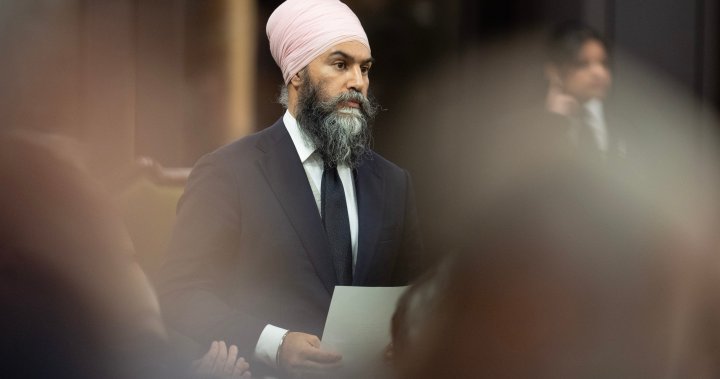The Canadian political landscape is in a state of flux following the unexpected resignation of Finance Minister Chrystia Freeland, prompting calls for Prime Minister Justin Trudeau’s resignation and speculation about a potential snap election. NDP Leader Jagmeet Singh, whose party previously propped up the Liberal minority government through a supply-and-confidence agreement, has now publicly called for Trudeau to step down, citing the government’s perceived preoccupation with internal struggles rather than addressing pressing economic concerns facing Canadians. These concerns include escalating grocery prices, inflated housing costs, and the looming threat of tariffs from the incoming Trump administration in the United States. Singh’s declaration, coupled with the withdrawal of NDP support for the Liberals, has significantly destabilized the government and opened the door for a potential non-confidence motion that could trigger a federal election.
The Conservative Party, led by Pierre Poilievre, has seized upon the current instability, relentlessly pressuring the government to either demonstrate its confidence through a vote in the House of Commons or request a snap election from the Governor General. Poilievre has characterized Trudeau’s leadership as marked by chaos, division, and weakness, arguing that such an environment leaves Canada vulnerable, particularly in the face of potential trade disputes with the United States under a new Trump presidency. He highlights the perceived risk of a 25% tariff on Canadian goods, emphasizing the need for strong and stable leadership to navigate this challenging economic landscape. Poilievre’s rhetoric aims to portray Trudeau as clinging to power despite losing control, and underscores the NDP’s pivotal role in maintaining the Liberal government’s precarious grip on power.
While the government, represented by House Leader Karina Gould, maintains that it continues to hold the confidence of the House of Commons, citing successful outcomes in previous confidence votes, recent polling data suggests a decline in public support for the Liberals. An Ipsos poll indicates a five-point drop in Liberal support since September, bringing them to a tie with the NDP, which conversely experienced a five-point increase during the same period. This shift in public opinion suggests a potential realignment of progressive voters, with some reconsidering their support for the NDP. This trend of voter fluidity between the Liberal and NDP camps highlights the volatile nature of the current political climate and the potential for significant electoral shifts.
The NDP’s withdrawal from the supply-and-confidence agreement with the Liberals in September significantly altered the political dynamics in Ottawa. This agreement, which had provided a degree of stability to the minority government, effectively shielded the Liberals from potential non-confidence votes. Its termination leaves the government vulnerable, as any loss in a confidence vote could trigger a snap election. While the next fixed election date is set for October 2025, the current instability raises the possibility of an election being called much sooner.
The confluence of Freeland’s resignation, Singh’s call for Trudeau’s resignation, the Conservatives’ relentless pressure for a confidence vote or election, and shifting public opinion creates a highly volatile political atmosphere. The future of the Liberal government remains uncertain, with the potential for a snap election looming large. The NDP’s decision to withdraw its support has drastically shifted the balance of power, placing them in a position of considerable influence. The Conservatives, meanwhile, are eager to capitalize on the government’s perceived weakness and push for an election they believe they can win.
The political maneuvering in Ottawa reflects the broader economic anxieties and uncertainties facing Canadians. The rising cost of living, housing affordability challenges, and potential trade disruptions with the United States under a new Trump administration are all contributing to a sense of unease. These concerns are now playing out in the political arena, with each party vying to position itself as the best equipped to address these challenges. The coming weeks and months will be crucial in determining the future direction of Canadian politics and the leadership that will navigate these turbulent times.

